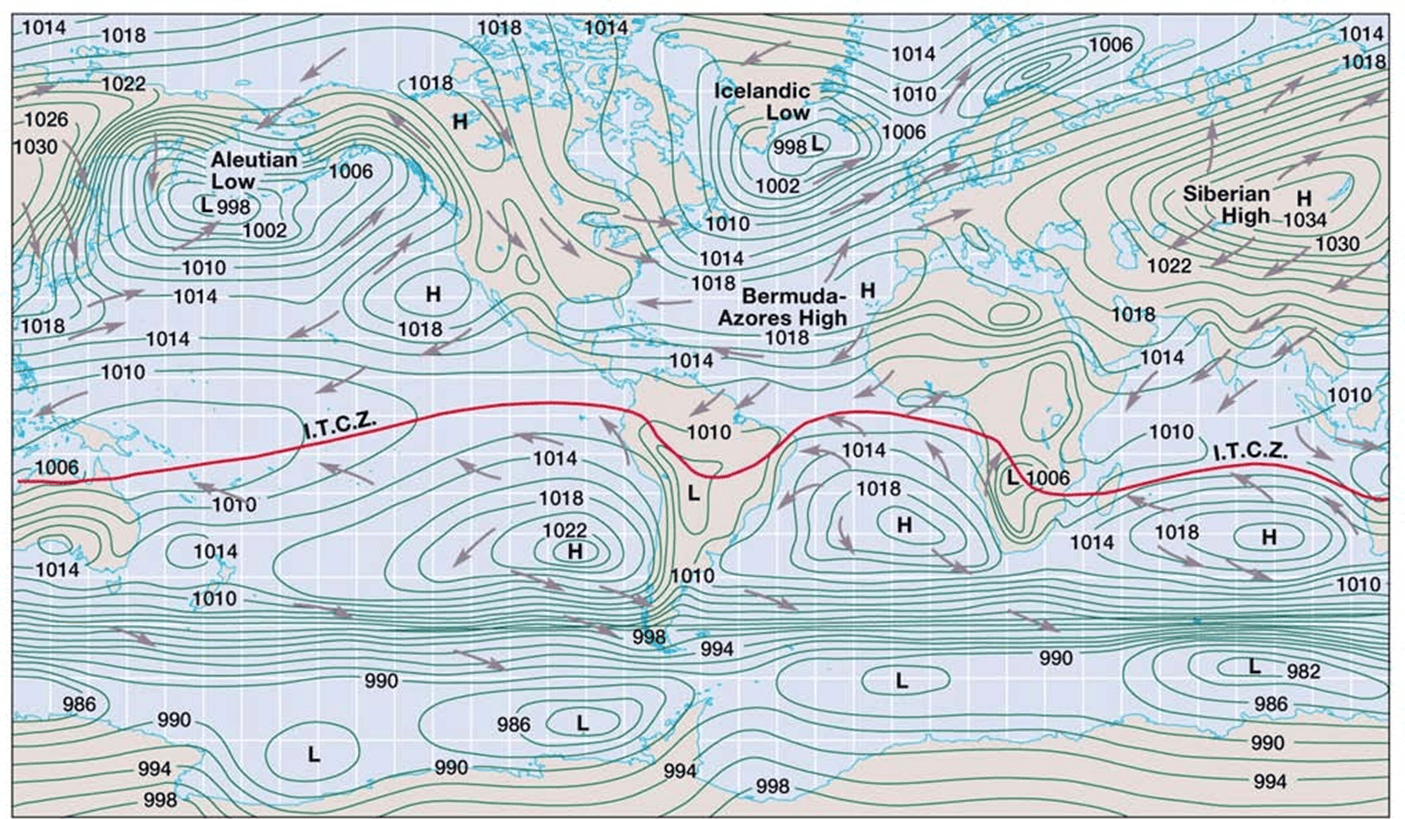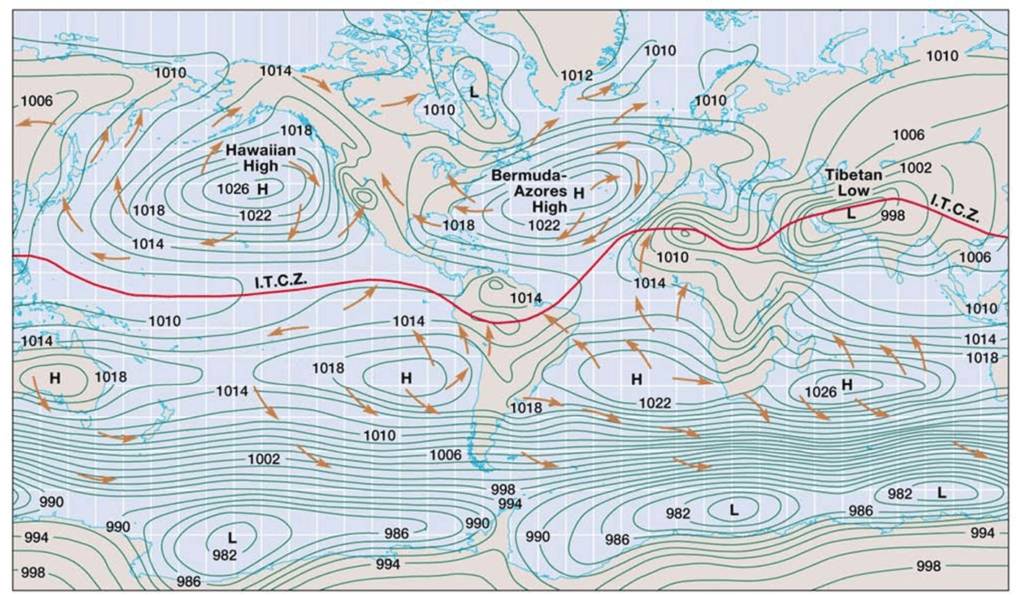Distribution of Wind and Pressure over the surface of the earth
In subtropical region, the northeast trade winds and southeast trade winds prevail in the northern and southern hemisphere respectively. They are separated near the equator by a zone of prevailing calms known as ‘doldrums’.
However, the doldrums are frequently absent in one part or the other of the equatorial zone. Then the northeast trades and southeast trades meet directly at a surface of discontinuity on which strong rainsqualls may develop. The zone of doldrums is largely north of equator. Over some parts of the earth it even extends into southern hemisphere. Where the zone of doldrums is displaced far north from its symmetrical position at the equator, the southeast trade winds may reach into the northern hemisphere and get deflected into southwest winds under the influence of the coriolis force. Beyond the trade wind regions of each hemisphere are the zones of ‘prevailing westerlies’. These westerlies are better developed in the southern hemisphere than in the northern hemisphere. These zones of westerlies are the regions of the migrating cyclones and anticyclones. Poleward from the region of westerlies, beyond 65 to 75 latitude easterly winds with a component towards the equator prevail. The wind distribution as described is closely connected with the general pressure distribution.


Near the equator, a zone of low pressure is found. It is followed in both hemispheres by zone of high pressure called ‘subtropical’ high-pressure belts. In summer hemisphere, these high-pressure belts do not extend continually around the earth but are interrupted over the continents since the land is hotter than the oceans. The central regions of the high-pressure belts have frequent calms. In the region of the westerlies even the mean pressure distribution is rather irregular because of the migrating pressure centers. On the whole, the pressure decreases here toward the pole. In the surface layers of the arctic and of the Antarctic zone, the pressure distribution is anticyclonic, because of the low temperature of the air in the surface layers. Since Greenland and Antarctica are not symmetrical with respect to the poles, the zones of the easterly winds in the polar regions are not symmetrical to the poles.
Effect of land and sea on the on the wind and pressure distribution
The unequal heating of water and land produces considerable modifications of the pressure and wind distribution. These deviations are more noticeable during the extreme months of January and July.
During July, the large continental mass of the northern hemisphere is much warmer than the surrounding oceans. Hence a low pressure is found over the continents, which interrupt the high-pressure belt.
The continental low is in direct connection with the equatorial low-pressure zone of doldrums. The southern hemisphere has winter in July so that here the land is colder than the water. But the disturbance of the pressure distribution is much less because of the smaller land area in the southern hemisphere. Over the continents, in the northern hemisphere during July, the northeast trade winds are absent. Instead, the southwest winds that are observed are continuation of the southeast trade winds of the southern hemisphere, which are deflected to southwest as they cross the equator.
The deflection of the southeast trades into the southwest monsoon is especially pronounced over India and the Indian Ocean. During January in the northern hemisphere, the continent is much colder than the adjoining oceans where a strong high is developed. On the south side of the continental anticyclone, the winds are northeasterly. The centers of low pressure over the oceans are considerably intensified during the winter so that the cyclonic activity is now at a maximum. On the north side of the continental anticyclone, the winds are westerly. Thus the belts of westerlies surround the northern hemisphere completely, but are displaced more northward over the continents. The southern hemisphere has its summer during January. Thus the pressure over the continents is now lower than over the adjoining oceans. As a result, the zone of doldrums with its low pressure shows a southward bulge over the continent. But the interruption of the southern subtropical highpressure belt by the continents during January is only slight.

It’s difficult to find educated pesople on this subject, but you sound like you know what you’re talking about!
Thanks https://Evolution.Org.ua/